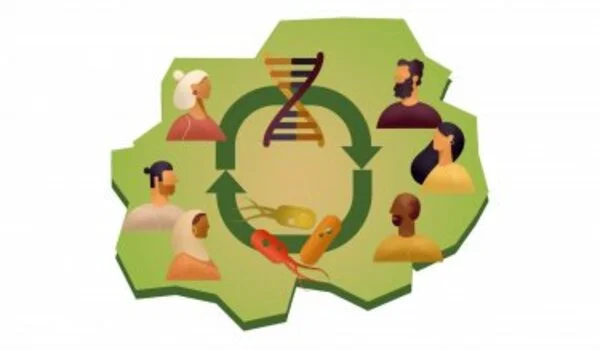Paleogenomics is the study of ancient DNA to understand evolutionary history. Using paleogenomics, scientists can trace changes in the human immune system over thousands of years, from genetic mutations to adaptations in response to diseases. This information can give insights into how the immune system has evolved to protect against pathogens, how it has responded to new diseases, and how it has changed over time in response to environmental pressures. This research can help us understand the development and evolution of the immune system, and provide important information for the development of new medical treatments and vaccines.
Paleogenomics was used by researchers from the Institut Pasteur, Université Paris Cité, the CNRS, and the Collège de France to trace 10,000 years of human immune system evolution. They examined the genomes of over 2,800 people who lived in Europe over the last ten millennia. They were able to pinpoint the increase in frequency of most pathogen-defeating mutations to after the Bronze Age, approximately 4,500 years ago. The researchers also discovered that mutations that increase the likelihood of developing inflammatory disorders have become more common over the last 10,000 years.
J.B.S. Haldane, a geneticist, attributed the maintenance or persistence of the mutation responsible for red blood cell anomalies commonly observed in Africa in the 1950s to the protection these anomalies provided against malaria, an endemic infection that claims millions of lives. According to this theory, pathogens are among the most powerful selective pressures that humans face. Following that, several population genetics studies confirmed the theory. However, major questions remained, particularly regarding the specific epochs during which pathogens exerted the greatest selective pressures on human populations and their impact on the current risk of developing inflammatory or autoimmune disorders.
These results suggest that the risk of inflammatory disorders has increased in Europeans since the Neolithic period because of a positive selection of mutations improving resistance to infectious diseases.
Lluis Quintana-Murci
To address these questions, scientists from the Institut Pasteur, Université Paris Cité, the CNRS and the Collège de France, in collaboration with the Imagine Institute and The Rockefeller University (United States), adopted an approach based on paleogenomics. This discipline, which studies the DNA from fossil remains, has led to major discoveries about the history and evolution of humans and human diseases, as illustrated by the decision to award the 2022 Nobel Prize in Physiology or Medicine to the paleogeneticist Svante Pääbo.
In the study led by the Institut Pasteur, published in the journal Cell Genomics, the scientists analyzed the variability of the genomes of more than 2,800 individuals who lived in Europe over the past ten millennia – a period covering the Neolithic, the Bronze Age, the Iron Age, the Middle Ages, and the present.
The scientists first identified mutations that rapidly increased in frequency in Europe by recreating the evolution of hundreds of thousands of genetic mutations over time, indicating that they were advantageous. These “positive” natural selection mutations are mostly found in 89 genes that are enriched in functions related to the innate immune response, particularly the OAS genes, which are responsible for antiviral activity and the ABO blood group system.
Surprisingly, the majority of these positive selection events, which show a genetic adaptation to the pathogenic environment, began relatively recently, around 4,500 years ago, at the start of the Bronze Age. The scientists attribute this “acceleration” in adaptation to human population growth during this time period and/or to strong selective pressures exerted by pathogens during the Bronze Age, which were most likely linked to the spread of severe infectious diseases such as plague.

At the same time, the researchers looked at the opposite situation, that is, mutations whose frequency has decreased significantly over the last ten millennia. Because they increase the risk of disease, these mutations are most likely subject to “negative” selection. They observed that, once again, these selection events began primarily in the Bronze Age. Many of these harmful mutations were also found in genes associated with the innate immune response, such as TYK2, LPB, TLR3, and IL23R, and have been shown in experiments to have a negative effect on infectious disease risk. The findings highlight the importance of using an evolutionary approach in research on genetic susceptibility to infectious diseases.
Finally, the researchers investigated the theory that pathogen selection in the past favored alleles conferring resistance to infectious diseases, but that these alleles have since increased the risk of autoimmune or inflammatory disorders. They looked into the few thousand mutations that have been linked to increased susceptibility to tuberculosis, hepatitis, HIV, or COVID-19, as well as rheumatoid arthritis, systemic lupus erythematosus, or inflammatory bowel disease. Looking at the evolution of these mutations over time, they discovered that those associated with an increased risk of inflammatory disorders, such as Crohn’s disease, became more common over the last 10,000 years, while those associated with an increased risk of developing infectious diseases became less common.
“These results suggest that the risk of inflammatory disorders has increased in Europeans since the Neolithic period because of a positive selection of mutations improving resistance to infectious diseases,” explains Lluis Quintana-Murci, director of the study and Head of the Human Evolutionary Genetics Unit (Institut Pasteur/CNRS Evolutionary Genomics, Modeling and Health Unit/Université Paris Cité).
The study’s findings, which drew on the vast potential of paleogenomics, show that natural selection has targeted human immunity genes in Europe over the last ten millennia, particularly since the beginning of the Bronze Age, contributing to current disparities in the risk of infectious and inflammatory diseases.














